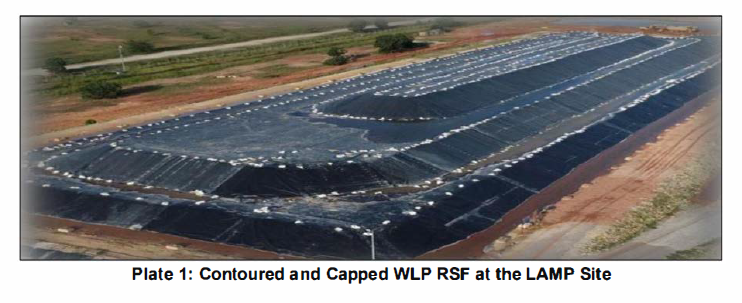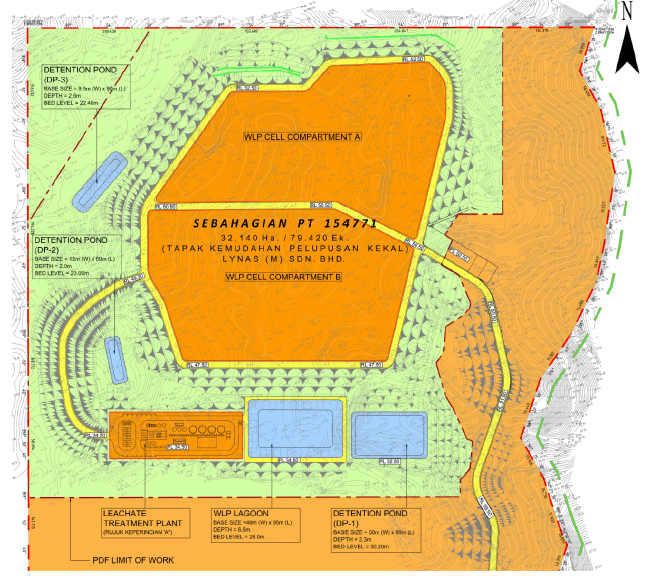Away from Kuantan's hustle and bustle, the Felda population spread near the Pahang-Terengganu border live an adequate and simple life.
For years, they've seen their quality of life improve thanks to income from oil palm plantation programmes which the government initiated in the 1970s. The programmes transformed the local population into smallholders who have benefited for generations.
Their way of life was however disrupted in the last decade following a brush with industrial greed that left the landscape in the area scarred with red ditches from bauxite mining.
They were able to return to some degree of normalcy following a moratorium on bauxite mining since 2016 to allow for proper regulations to be enacted.
However, the community is set to have another brush with big industry as radioactive rare earth waste will end up a stone's throw away from where they live.
The name "Lynas Malaysia" is not unfamiliar to the local community but with the firm's rare earth processing plant located 30km to the east in Gebeng, it has never been a real concern. Instead, it was more of an urban issue for the folks in Kuantan.
Unfortunately, a plan to build a massive industrial waste facility in Bukit Ketam and the relocation of Lynas' waste from Gebeng mean the rare earth firm's toxic byproducts will be just three kilometres away from the nearest Felda settlement - Felda Neram Satu.
Other Felda settlements within a 10km radius of the waste facility include Felda Bukit Kuantan, Felda Bukit Sagu and Felda Bukit Goh.
The Environmental Impact Assessment (EIA) for Lynas' Permanent Disposal Facility (PDF) revealed that it would be part of a larger Multi-Category Industrial Scheduled Waste Disposal Site (MCISWDS) that plays host to more than just Lynas' waste.
Monitoring for 100 years
The Lynas component, which makes up about one-third of the site, will require radiological and environmental monitoring for at least 100 years.
Yesterday, Malaysiakini reported that the proposed MCISWDS in Bukit Ketam, the size of 283 football fields, has been carved out of the Bukit Kuantan Forest Reserve.
A private firm that is majority-owned by Pahang Regent Tengku Hassanal Ibrahim Alam Shah will be the contractor of the MCISWDS.
Even though the EIA report for Lynas' PDF has gone on a month-long public display since Jan 27, there was little attention over the mega project.
Affected communities don't normally pore over voluminous EIA reports until the impact becomes apparent.
The situation was not unlike the Lynas Advanced Material Plant (Lamp) in Gebeng, which started construction in 2010. Since 2008, Kuantan MP Fuziah Salleh has been the lone voice in Parliament to raise concerns about the Lamp.
The community only started to notice and organise themselves after the Lamp was approved and already under construction.
After years of protests, Lynas finally agreed to move its cracking and leaching process, which produced the radioactive Water Leach Purification (WLP) residue, back to Western Australia by July 2023. It was part of an agreement with the Pakatan Harapan government in 2019 in exchange for extending its operating licence.
Even though the radioactivity of the WLP is considered low, there has been a build-up of the residue since 2012 and more will continue to accumulate until 2023. This is where Bukit Ketam comes in.

The EIA report estimated that by September 2023, Lynas would have accumulated 1.037 million cubic metres of WLP, enough to fill 415 Olympic swimming pools.
Treated runoff released into river
At present, they are stored at Lynas' factory at Gebeng, near Kuantan Port. They will be transported to the new PDF site farther inland when it is ready.
Lynas' PDF will occupy 58.25ha of the 202.35ha MCISWDS.
The Lynas PDF will include two storage cells, a lagoon, leachate treatment plant (LTP), detention pond and administrative buildings, according to the EIA report prepared by AGV Environment Sdn Bhd.

The cells are for the permanent storage of Lynas' WLP, while the detention pond is to temporarily store uncontaminated stormwater and allow for controlled release to avoid flooding. The lagoon is to store contaminated stormwater that came in contact with the WLP.
The PDF cells, which are essentially huge holes carved out of the ground and reinforced with containment material, will be 1.35 million cubic metres in size, equivalent to 540 Olympic swimming pools.

One of the most critical components is the LTP, which will treat stormwater tainted by WLP, before releasing the treated water into Sungai Ara.
Sungai Ara is connected to Sungai Riau that flows into Sungai Kuantan, where the Kobat Water Intake Station is located. The water intake station provides water to 781,000 users in Kuantan.
"The composition of active surface runoff from the PDF cells is not suitable to be released to the tributaries of Sungai Ara. Therefore, it will be contained in the WLP Lagoon before being conveyed to the LTP for treatment.
"The effluent will be discharged into the tributaries of Sungai Ara, which are ephemeral in nature," the EIA report said.
Clearing of the site is set to start in the middle of this month, and the PDF is expected to be completed by September 2024.
The public can view the full EIA report here. They can also make formal feedback here. - Mkini



No comments:
Post a Comment
Note: Only a member of this blog may post a comment.